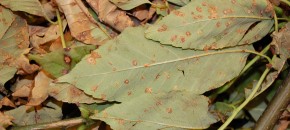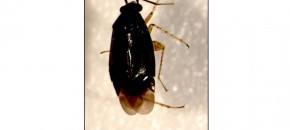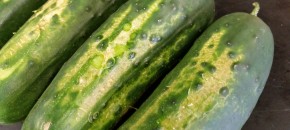
Springtime 2014 seemed like it would go on forever. Temperatures remained cool for an extended period and we had plenty of moisture, which are the conditions that always result in shade tree leaf diseases. Here are a few we saw…
Continue reading...Rutgers Cooperative Extension

Springtime 2014 seemed like it would go on forever. Temperatures remained cool for an extended period and we had plenty of moisture, which are the conditions that always result in shade tree leaf diseases. Here are a few we saw…
Continue reading...Leaf blight in Dill as shown up in the past week in some areas of southern New Jersey. Leaflets on plants will appear wilted, often on the lower portion of the plant first. Up close, irregular lesions will appear scattered over the leaflets, girdling them, causing them to look wilted. There have been a couple […]
Continue reading...
This year we observed damage to cranberries likely caused by an unknown “mirid” bug (Hemiptera: Miridae). These insects are known as true bugs and have piercing-sucking mouthparts to suck juices out the plants. The species has now been identified by Dr. Thomas Henry, from USDA-ARS-Systematic Entomology Laboratory in Beltsville, MD, as Plagiognathus repetitus (Hemiptera: Miridae). The insect […]
Continue reading...Cole Crops Pumpkin Spinach Cole Crops Downy mildew and Alternaria – Symptoms of downy mildew include purple to yellowish-brown spots on upper leaf surfaces. A grayish-white spore mass will develop and cover the underside of leaves under ideal temperatures (night temperatures of 46 to 61°F and day temperatures below 75°F). Downy mildew can kill young […]
Continue reading...Basil downy mildew remains active. The weather this time of year is ideal for downy mildew development across many crops. Growers should remain diligent going into the fall with regular scouting and preventative fungicide applications. Cucurbit downy and powdery mildew remain active. Growers holding mature pumpkins in the field for the next few weeks should […]
Continue reading...
The effects of a cold night a few weeks ago are showing up in some varieties of cucumber around New Jersey. Symptoms on maturing fruit appear as brownish-tan areas on the epidermis of fruit. The fruit will also show cracking as if it has a dry rot. The effects are physiological where areas of young developing fruit got […]
Continue reading...
